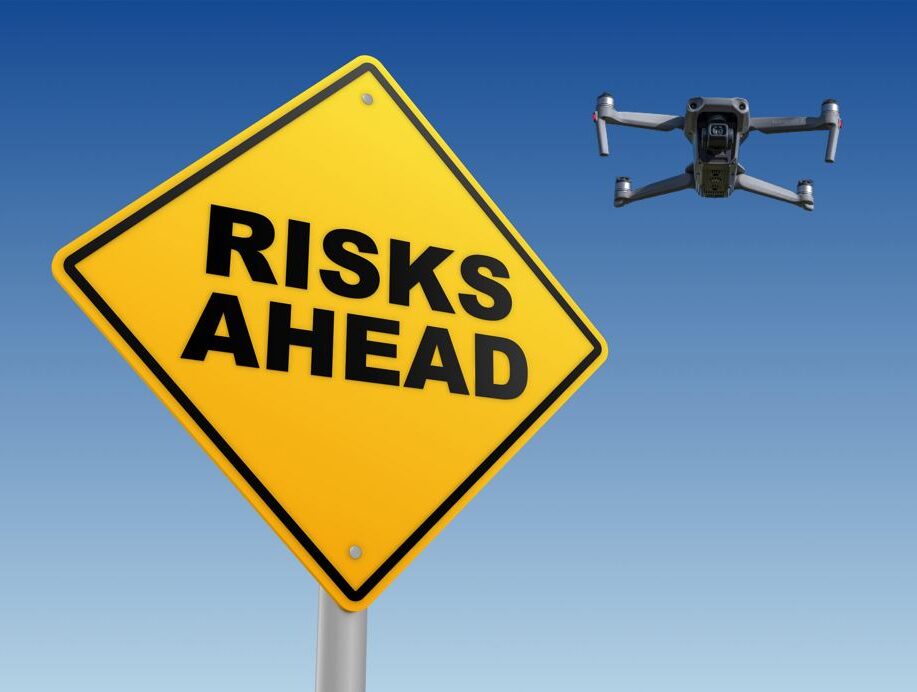

In the previous post – Drone Jamming Effectiveness at Airports – we discussed the effectiveness, features, and limitations of jammers. Specifically, we looked at what happens to a drone when it’s jammed, and how that can affect airport activities.
Let’s go a bit further to understand what a drone recovery program is and its fundamental issues. What a drone will do when it’s jammed depends on who programmed it, and how it was done.
 When a drone is effectively jammed, the drone pilot’s signal commands and/or the GPS signal cannot be received and understood by the drone because of the intense noise interference created by the RF jammer – it’s blocked out. Essentially, the drone is now flying ‘deaf’ because the communications link between the drone pilot’s transmitter and the drone’s receiver has been temporarily severed, or the drone is flying ‘blind’ because the GPS signal is not received as it is blocked out.
When a drone is effectively jammed, the drone pilot’s signal commands and/or the GPS signal cannot be received and understood by the drone because of the intense noise interference created by the RF jammer – it’s blocked out. Essentially, the drone is now flying ‘deaf’ because the communications link between the drone pilot’s transmitter and the drone’s receiver has been temporarily severed, or the drone is flying ‘blind’ because the GPS signal is not received as it is blocked out.
For most commercial drones, when it loses communication with the pilot, the drone is pre-programmed by the manufacturer to immediately enter hover mode, so it doesn’t hit anything. It will then climb vertically to a safe altitude so it’s clear of any obstacles, then execute a return to home – either where it originally took off from or an updated home location. Some drones will simply land where they are if the programming deems it to be safer to do so (for example, if GPS isn’t available to them and navigation can’t be trusted). If the drone is low on battery power and is unable to make it to the home location, or the return track is deemed too risky, it is usually programmed to go into hover mode and land, or begin its journey home before descending vertically with only sufficient battery power to complete a controlled ‘soft’ landing. All this is without any input from the pilot.
Among the different manufacturers and different models, there are variations of this programmed flight, but it’s essentially a program to return the drone, or to keep the drone safe.
Most DIY drone enthusiasts will also want to keep their drone safe from harm and be able to return them home, so the process above is likely to be the same. They may have a more complex program, with multiple safe landing points along a route, especially when working near the edge of the flight endurance envelope. However, a sinister pilot who may want to hit a planned target like a crowd, building or aircraft on the ground, or has attached an Improvised Explosive Device (IED) or chemical aerosol spray to the drone, could reprogram their commercial or DIY drone with a ‘home location’ which is exactly the same location as the ‘target location’!
Even if you can positively identify the exact make and model of the drone, it’s still not possible to know exactly what it will do when it’s jammed due to many factors:
When a drone responds to jamming in a way that the operator doesn’t expect, there is little that the jammer operator can do, other than to stop jamming. Having spoken to many jammer operators, I understand that they expect one of these four things to happen:
Given all the issues regarding jamming operations near airports, airport security and police must decide if jamming is the right solution for them, and whether they should purchase a jamming system or look at alternatives to mitigate the threat from a rogue drone.
In my next blog post, we will look at key questions on whether Jamming is a Viable Solution for Airports.